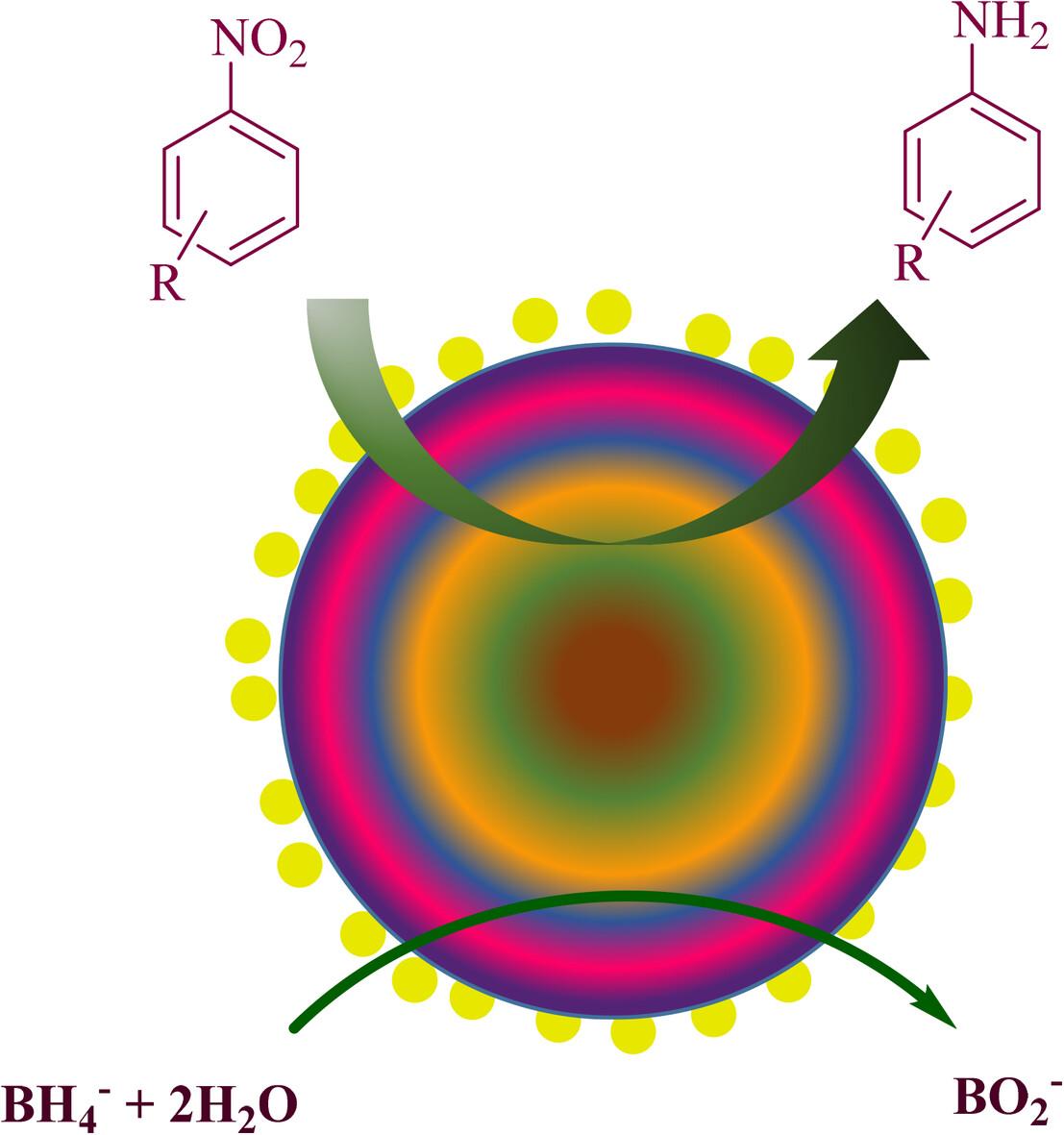求助PDF
{"title":"Designing magnetic catalysts based on gold nanoparticles supported by ethylenediamine tetraacetic acid functionalized amino-modified poly(N-isopropyl acrylamide) for reduction of nitro compounds in water","authors":"Hadieh Rahbar Kafshboran, Soheila Ghasemi","doi":"10.1002/pi.6625","DOIUrl":null,"url":null,"abstract":"<p>A novel smart catalyst was developed with amino-modified thermo-responsive poly(<i>N</i>-isopropyl acrylamide) (PNIPAM) grafts on silica-coated magnetic nanoparticles using the conventional free radical polymerization process. By this methodology, the polymer was successfully grafted mainly onto silica-modified iron oxide nanoparticles (Fe<sub>3</sub>O<sub>4</sub>@Si). The PNIPAM-grafted Fe<sub>3</sub>O<sub>4</sub>@Si was then subjected to ethylenediamine treatment to produce the amino-functionalized support (Fe<sub>3</sub>O<sub>4</sub>@Si@PNIPAM-NH<sub>2</sub>), which was subsequently modified with carboxyl functional groups by using EDTA (ethylenediaminetetraacetic acid) to create Fe<sub>3</sub>O<sub>4</sub>@Si@PNIPAM-NH<sub>2</sub>-EDTA. Au nanoparticles were then decorated on this support through its two amines and four carboxylates. Different methods were used to study this novel catalyst, including inductively coupled plasma, Fourier transport infrared spectroscopy, TGA, dynamic light scattering, SEM, energy-dispersive X-ray analysis, vibrating sample magnetometry, XRD and elemental CHN analysis. The reduction of several aryl-nitro derivatives demonstrated a significant catalytic activity for the as-synthesized gold catalyst (Fe<sub>3</sub>O<sub>4</sub>@Si@PNIPAM-NH<sub>2</sub>-EDTA-Au). The Au catalyst can be successfully removed from the reaction components using a magnetic field and used again in eight successive reduction reactions without significant gold leaching and loss of catalytic activity. © 2024 Society of Industrial Chemistry.</p>","PeriodicalId":20404,"journal":{"name":"Polymer International","volume":"73 7","pages":"530-544"},"PeriodicalIF":3.6000,"publicationDate":"2024-02-28","publicationTypes":"Journal Article","fieldsOfStudy":null,"isOpenAccess":false,"openAccessPdf":"","citationCount":"0","resultStr":null,"platform":"Semanticscholar","paperid":null,"PeriodicalName":"Polymer International","FirstCategoryId":"92","ListUrlMain":"https://onlinelibrary.wiley.com/doi/10.1002/pi.6625","RegionNum":4,"RegionCategory":"化学","ArticlePicture":[],"TitleCN":null,"AbstractTextCN":null,"PMCID":null,"EPubDate":"","PubModel":"","JCR":"Q2","JCRName":"POLYMER SCIENCE","Score":null,"Total":0}
引用次数: 0
引用
批量引用
Abstract
A novel smart catalyst was developed with amino-modified thermo-responsive poly(N -isopropyl acrylamide) (PNIPAM) grafts on silica-coated magnetic nanoparticles using the conventional free radical polymerization process. By this methodology, the polymer was successfully grafted mainly onto silica-modified iron oxide nanoparticles (Fe3 O4 @Si). The PNIPAM-grafted Fe3 O4 @Si was then subjected to ethylenediamine treatment to produce the amino-functionalized support (Fe3 O4 @Si@PNIPAM-NH2 ), which was subsequently modified with carboxyl functional groups by using EDTA (ethylenediaminetetraacetic acid) to create Fe3 O4 @Si@PNIPAM-NH2 -EDTA. Au nanoparticles were then decorated on this support through its two amines and four carboxylates. Different methods were used to study this novel catalyst, including inductively coupled plasma, Fourier transport infrared spectroscopy, TGA, dynamic light scattering, SEM, energy-dispersive X-ray analysis, vibrating sample magnetometry, XRD and elemental CHN analysis. The reduction of several aryl-nitro derivatives demonstrated a significant catalytic activity for the as-synthesized gold catalyst (Fe3 O4 @Si@PNIPAM-NH2 -EDTA-Au). The Au catalyst can be successfully removed from the reaction components using a magnetic field and used again in eight successive reduction reactions without significant gold leaching and loss of catalytic activity. © 2024 Society of Industrial Chemistry.
设计基于 EDTA 功能化氨基改性 PNIPAM 支持的金纳米粒子的磁性催化剂,用于还原水中的硝基化合物
利用传统的自由基聚合工艺,在二氧化硅包覆的 MNPs 上接枝氨基改性热响应聚(N-异丙基丙烯酰胺)(PNIPAM),开发了一种新型智能催化剂。通过这种方法,聚合物主要被成功接枝到二氧化硅修饰的氧化铁纳米粒子(Fe3O4@Si)上。PNIPAM 接枝的 Fe3O4@Si 然后经过乙二胺处理,生成氨基官能化的支撑物(Fe3O4@Si@PNIPAM-NH2),随后使用 EDTA(乙二胺四乙酸)对其进行羧基官能团修饰,生成 Fe3O4@Si@PNIPAM-NH2-EDTA。研究人员采用了不同的方法来研究这种新型催化剂,包括 ICP、FT-IR、TGA、DLS、SEM、EDX、VSM、XRD 和 CHN。对几种芳基硝基衍生物的还原表明,合成的金催化剂(Fe3O4@Si-NPNIPAM-NH2-EDTA-Au)具有显著的催化活性。利用磁场可成功地将金催化剂从反应组分中移除,并在 8 个连续的还原反应中再次使用,而不会有明显的金浸出和催化活性损失。本文受版权保护。
本文章由计算机程序翻译,如有差异,请以英文原文为准。


 求助内容:
求助内容: 应助结果提醒方式:
应助结果提醒方式:


